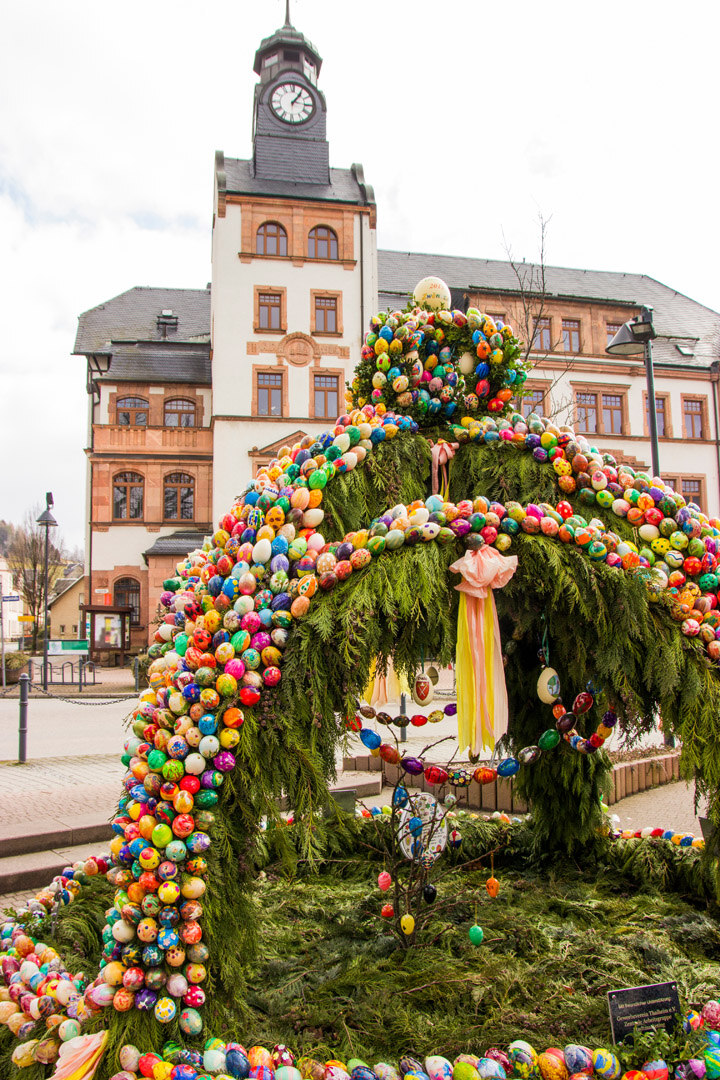Easter water
The collection of Easter water has its roots in pagan believes. However, people in Saxony still decorate their village fountains to this day.
Back in pagan times, people considered water to be a symbol of life and fertility. In the centuries following the birth of Christ, it became connected to Easter as a symbol of life. Ever since the 2nd century, holy water was only consecrated twice a year: during the night masses on Easter and Pentecost. This water was supposed to be extremely effective and people would often take it home for their friends and family that could not make it to church.
According to custom, Easter water has to be collected sometime between midnight and sunrise during the night before Easter Sunday. It has to be taken from a creek or fountain and carried home in silence. Easter water is supposed to maintain beauty and youth for a whole year, protect from sickness and dispel misfortune. To save their life stock from illness, the farmers would often herd it into creeks on Easter morning.
Since Easter water is a symbol of fertility it is often collected by young women or girls who then have to carry it home in complete silence. If that silence were broken, the water would lose all of its holy and healing abilities. Another rule during the collection of the Easter water is that not one drop of it is supposed to be spilled on the walk home. Since it is often collected in the village fountain, a lot of them are still being decorated to this day.

